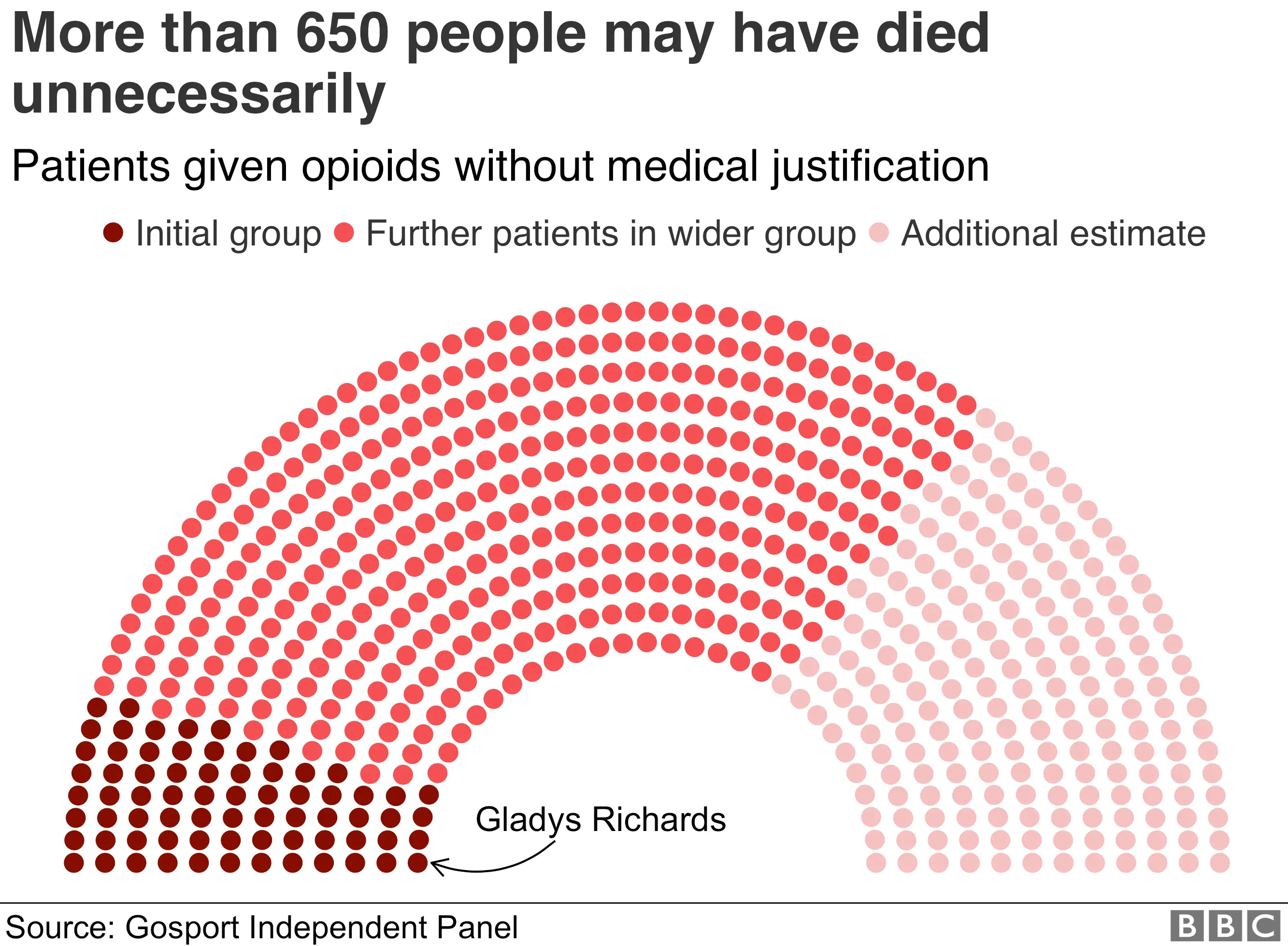Gosport hospital deaths: The numbers behind the scandal
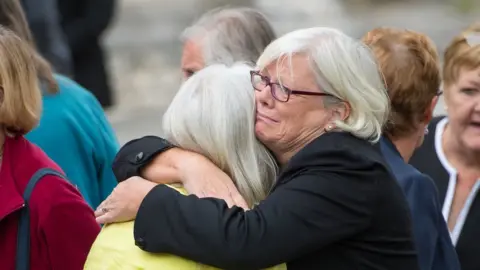 PA
PAWhat exactly was the "critical turning point" that helped reveal the scandal at Gosport War Memorial Hospital in which hundreds of patients died prematurely?
In the graphics below we take an in-depth look at how investigators exposed the details of more than a decade of "shortened" lives at the hospital, which resulted from patients being given dangerous doses of painkilling drugs.
A panel of independent experts began by looking at the deaths of 163 patients. What they found prompted them to examine more than 2,000 deaths between 1987 and 2001.

Research revealed that 71 patients in the initial group had been given powerful painkilling drugs "without appropriate clinical indication". This discovery made the panel "deeply concerned".
One of the patients was 91-year-old Sheila Gregory. Admitted in 1999, the report says she was given diamorphine for "no clear reason". She died a day later.
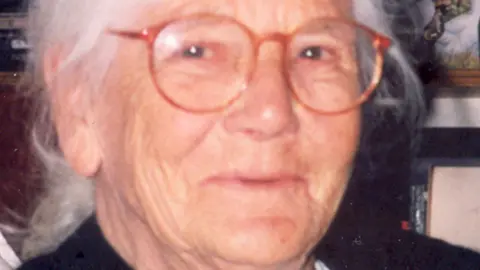 PA
PADiamorphine is the medical name for heroin. It is ordinarily reserved for patients suffering unbearable pain, sometimes in their final hours.
Like 62 other members of the group, the cause of Ms Gregory's death is listed as "bronchopneumonia".
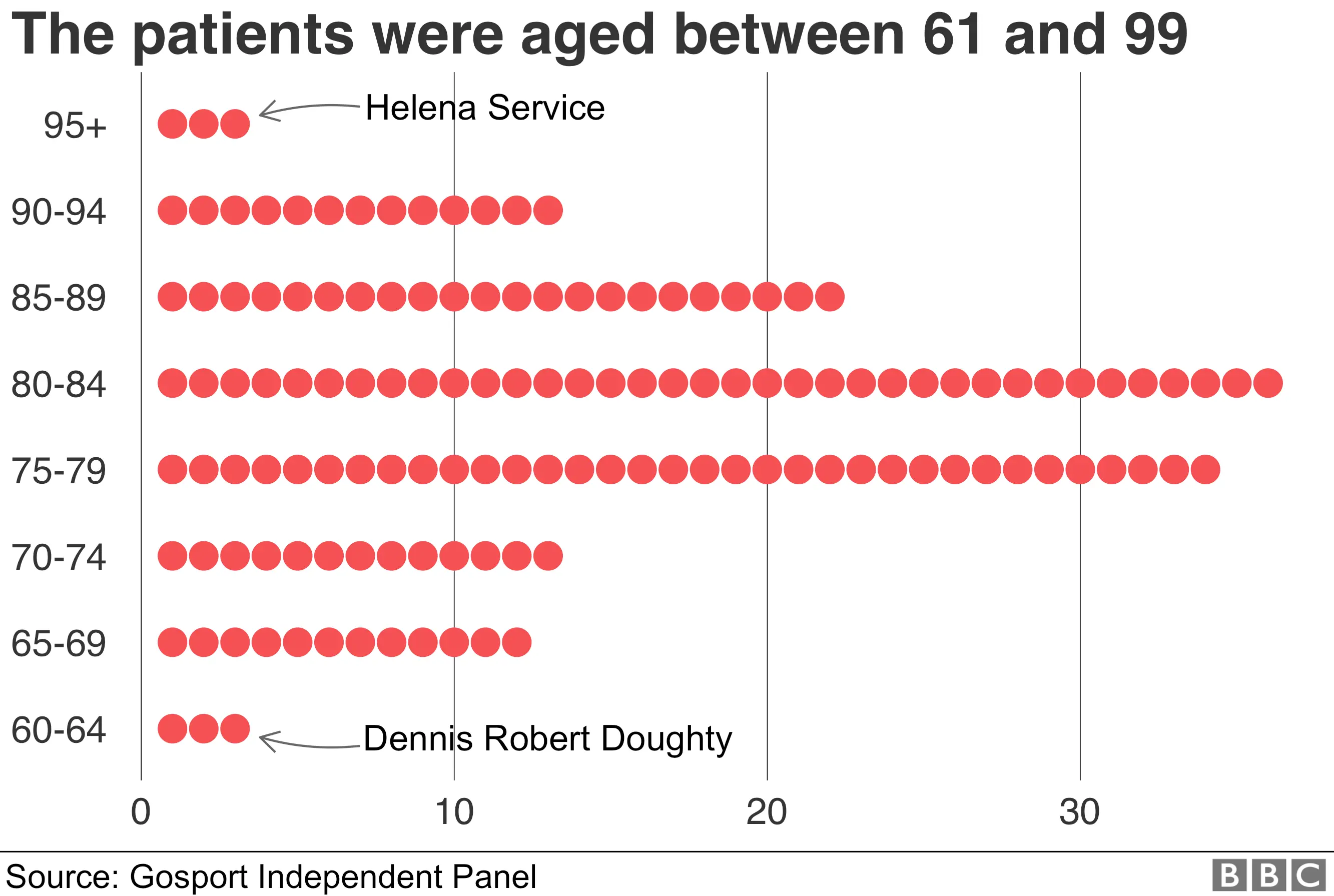
Helena Service was the oldest patient to die. The 99-year-old was given diamorphine through a syringe driver, pumping the dose at a constant rate into her body.
The inquiry judged that she was one of those given opioid painkillers without appropriate medical justification.
The reason given for administering diamorphine was that she was "restless". Ms Service died two days after she was admitted on 5 June 1997 from "congestive cardiac failure", according to hospital records.
The youngest of the group who died was 61-year-old Dennis Robert Doughty. His record simply states that he died on 13 May 2000 from bowel cancer.
Most of those who died were elderly - the average age of patients who died was 81. Almost two-thirds were women and many were frail.
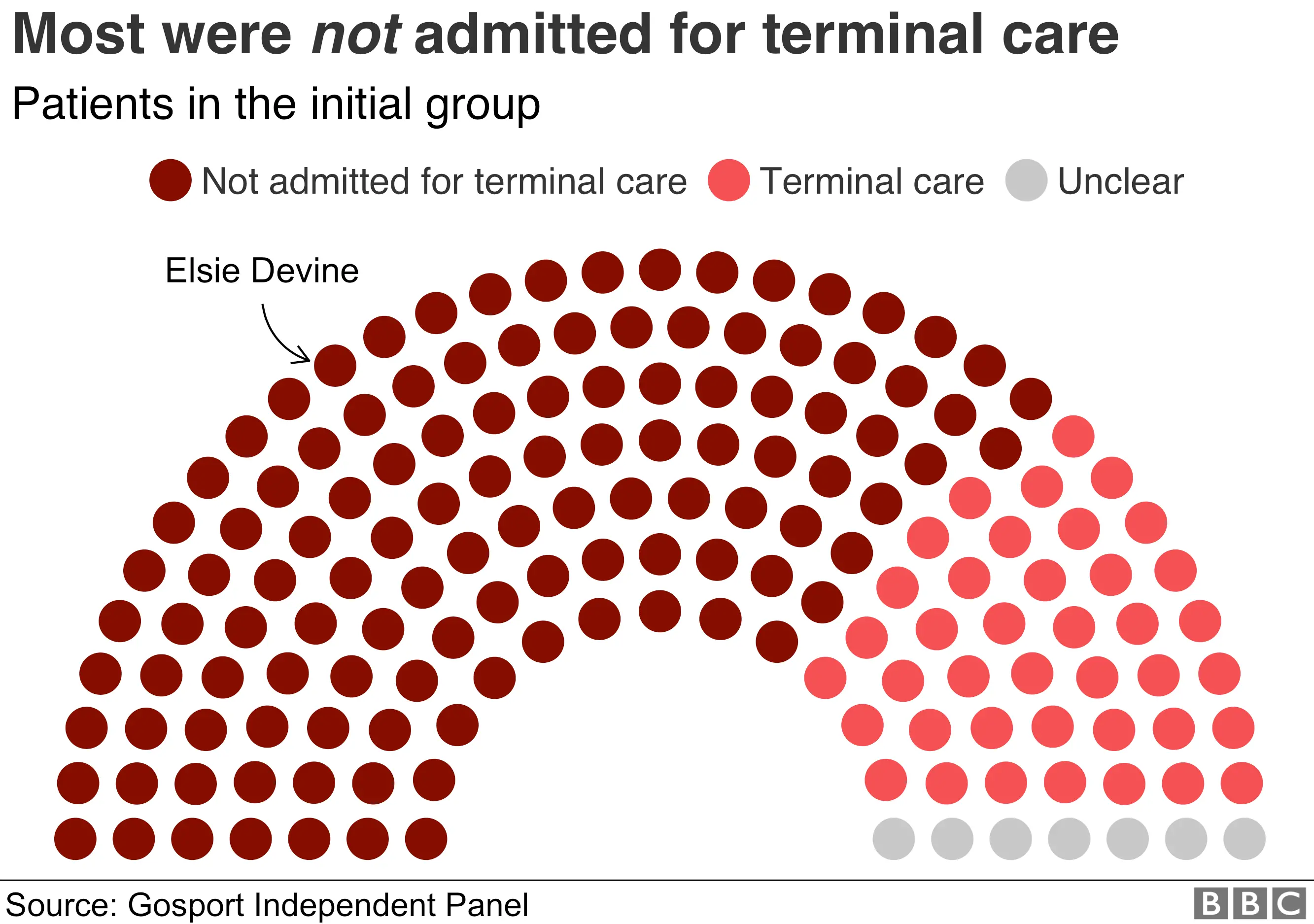
More than 70% (116) of the initial group had not been admitted to the hospital for terminal care - in many cases, their deaths were unexpected.
Elsie Devine, 88, was admitted in October 1999 with kidney problems.
No reason was given on her hospital notes for prescribing her diamorphine in combination with two other powerful painkillers - fentanyl and midazolam.
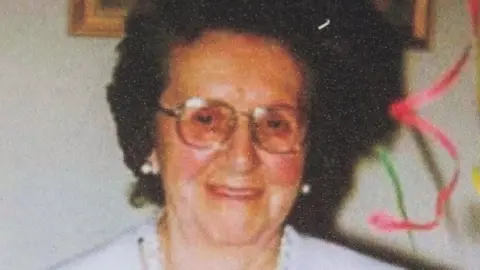 Family handout
Family handoutAgain, she was given the drugs by syringe driver and died only two days later. Her cause of death was listed as renal failure.
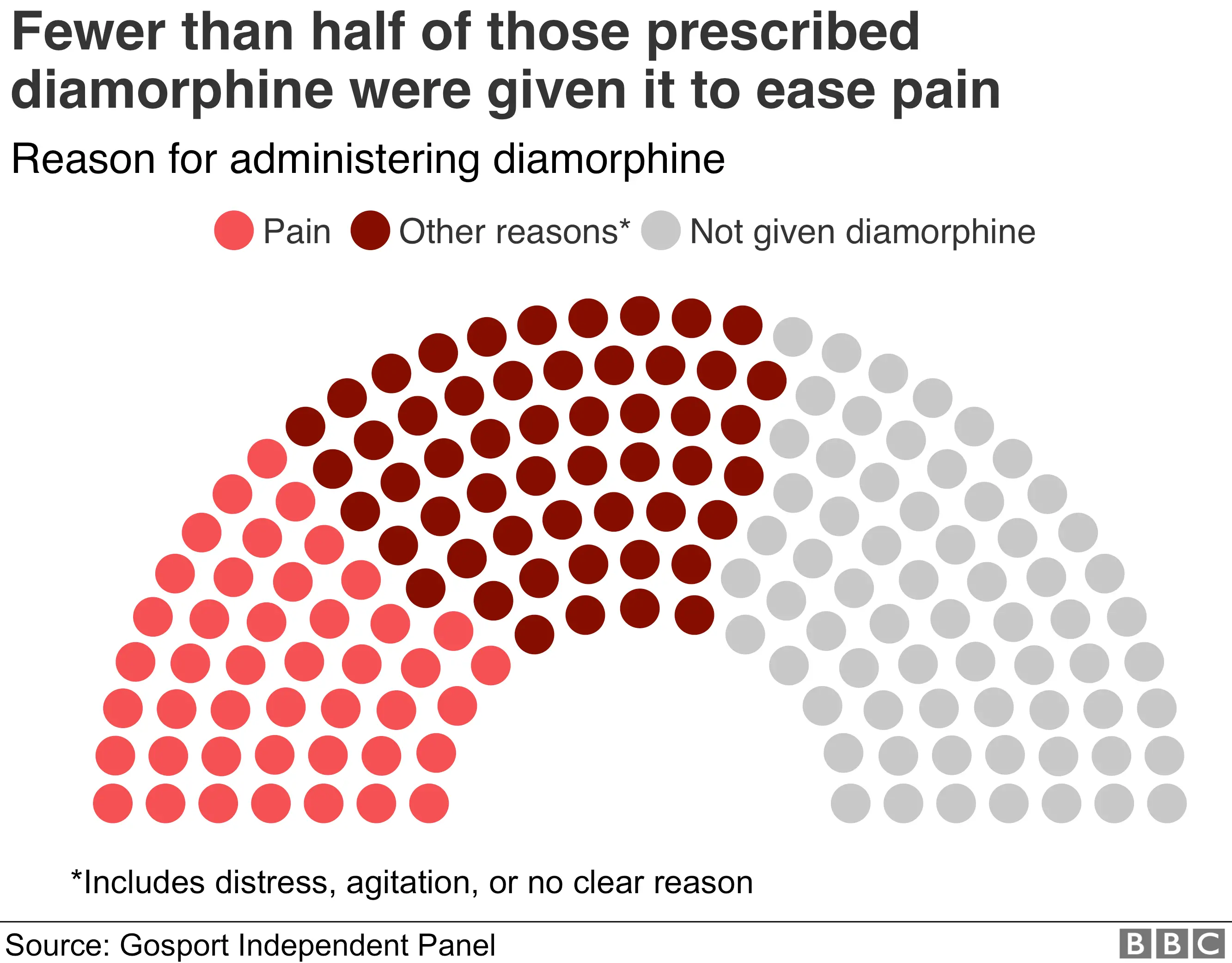
The panel discovered that reasons for prescribing the painkilling drugs, recorded by medical staff in patients' notes at the hospital, were not always to do with pain relief. They were often vague and included "restlessness", "agitation" or "deterioration".
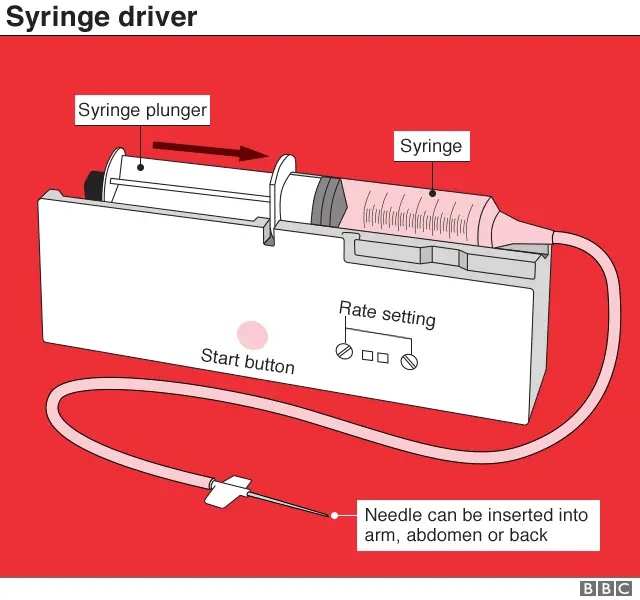
Syringe drivers were used in more than half of the cases in the initial group.
They are designed to gradually deliver a steady dose of a chosen drug or other fluid into the bloodstream of the patient.
Concerns have been raised about their use, which is subject to clear hazard warnings for medical staff.
The inquiry included evidence given to the police by nursing auxiliary Paulina Spilka.
She told officers that she did not recall a "single instance of a patient not dying having been put on to a driver".
Patients were injected in the back, she said, so that it was impossible for them to take out the driver.
The inquiry found that continuous opioids were started at "inappropriately high doses". It also found that there was "little evidence that any consideration went into assessing what combination of drugs was best for an individual patient".
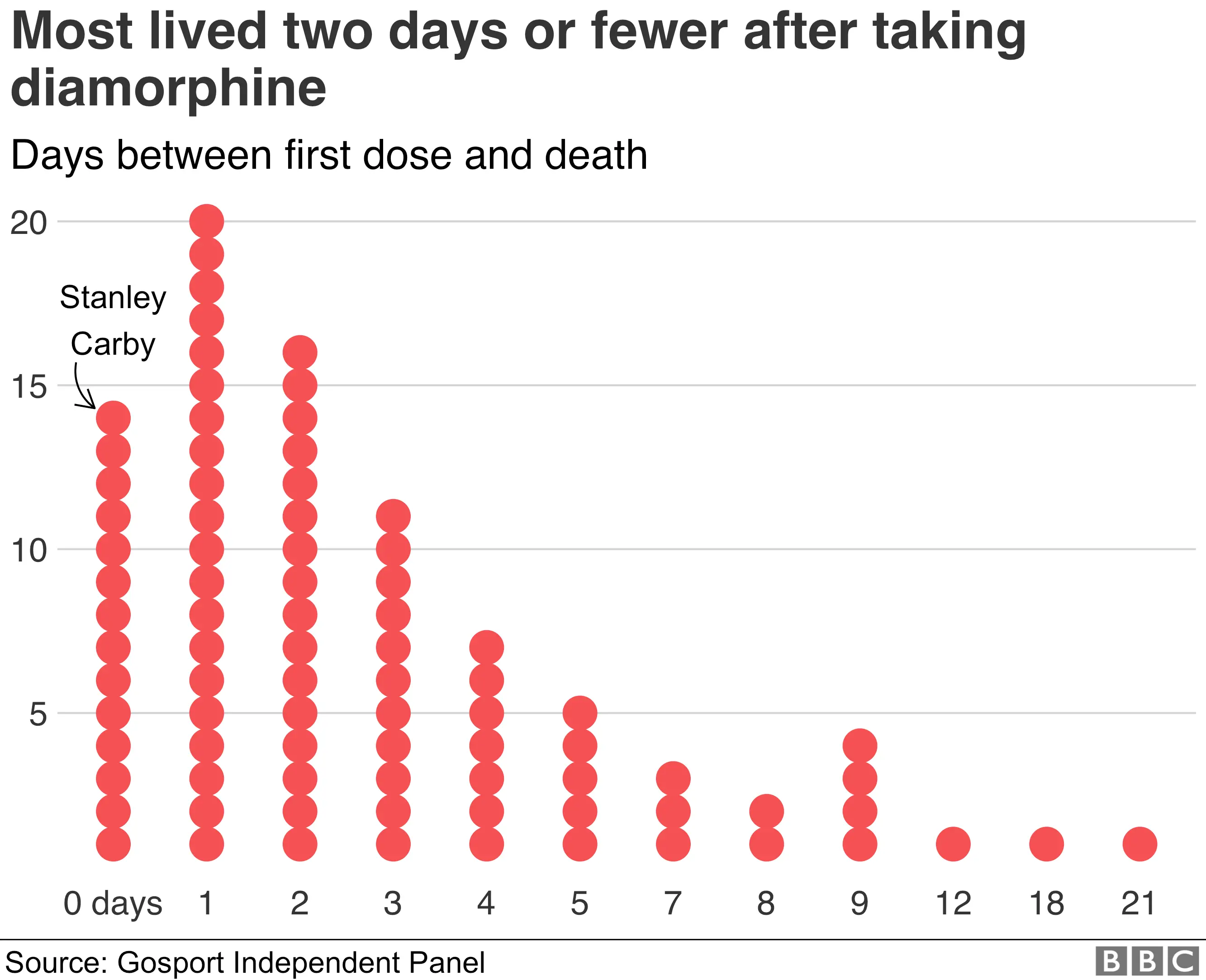
Deaths occurred very quickly after painkillers were administered by syringe driver.
Stanley Carby was one of those patients who died less than a day after his first dose of diamorphine. No reason was recorded for administering such a powerful painkiller. His cause of death is listed as "cerebrovascular accident", or stroke. Mr Carby was 65 years old.
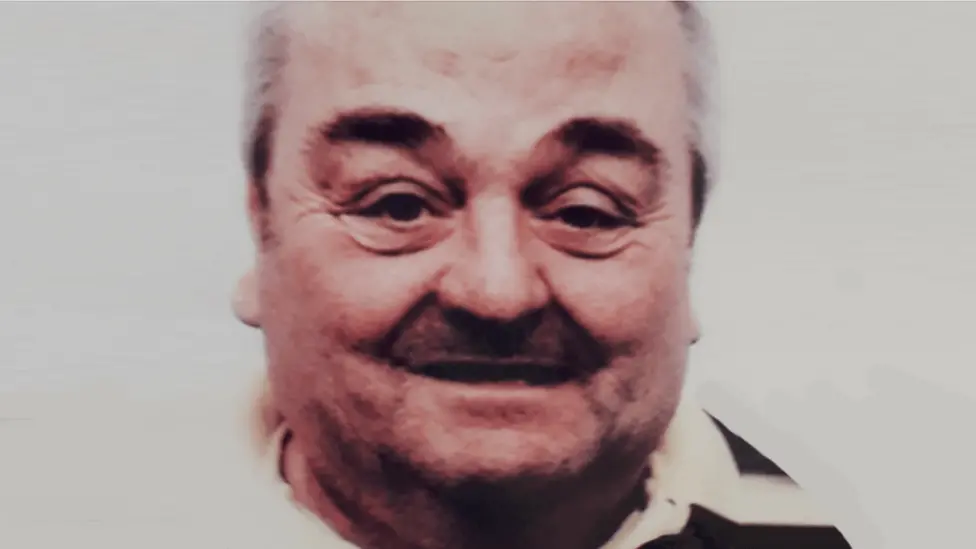
Where diamorphine was administered continuously, 56% of patients died within two days or fewer.
Of the patients who were given diamorphine combined with other drugs, midazolam and hyoscine, that figure jumped to 71%.
The cause of death in 63 cases was listed as bronchopneumonia, an infection of the lungs and small airways.
The inquiry team struggled to find any reason why the number of bronchopneumonia victims was so high. It did not match expectations among similar groups of elderly patients.
It concluded simply that the available documents did "not provide an explanation".
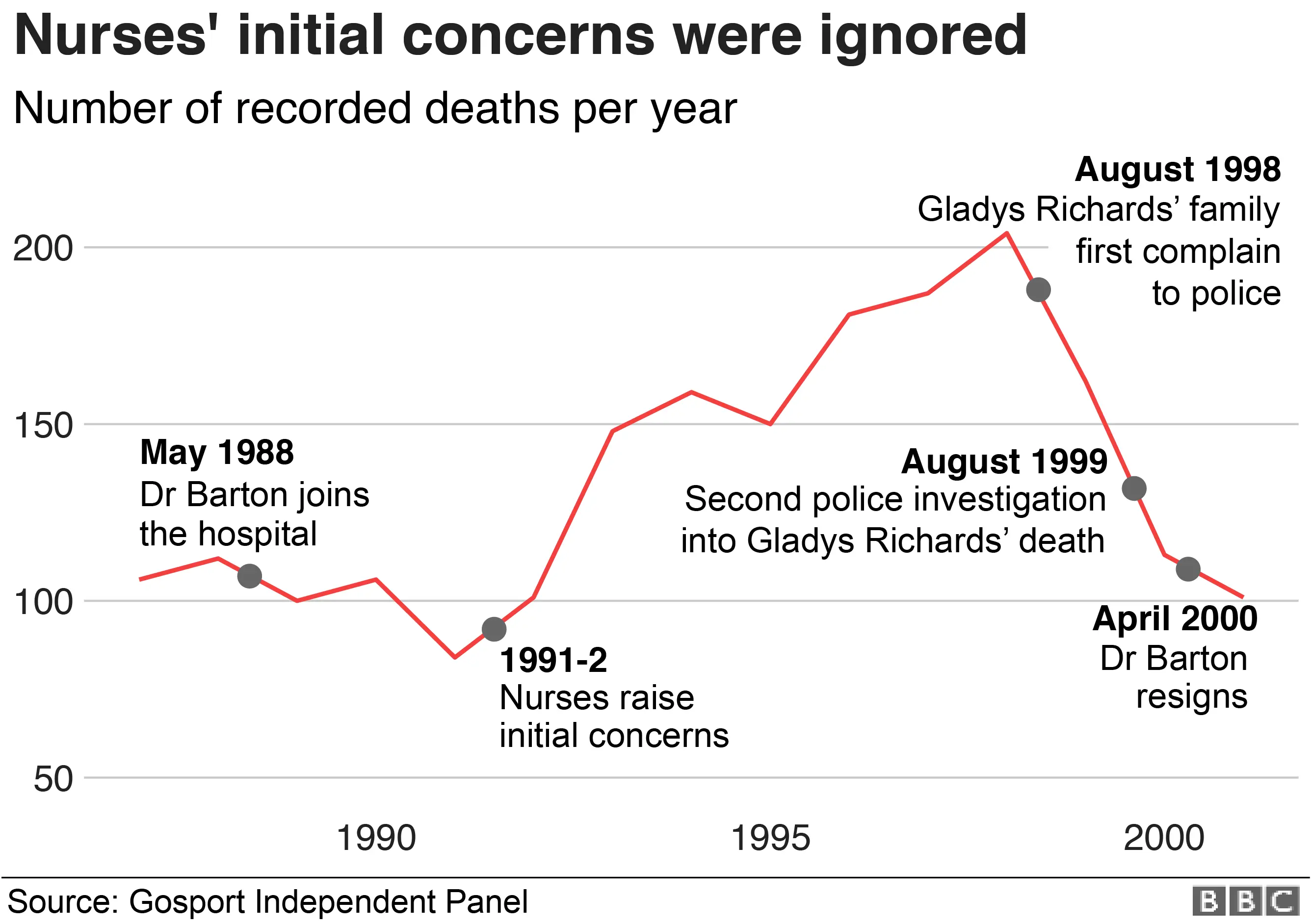
The inquiry also revealed how slow the authorities had been to act on warnings from nursing staff.
In the spotlight was Dr Jane Barton who worked in the department of medicine for elderly people at Gosport War Memorial Hospital from 1 May 1988 until her resignation on 5 July 2000.
During her 12 years at the hospital, Dr Barton signed 854 death certificates. Of the patients she treated, 94% received opiates.
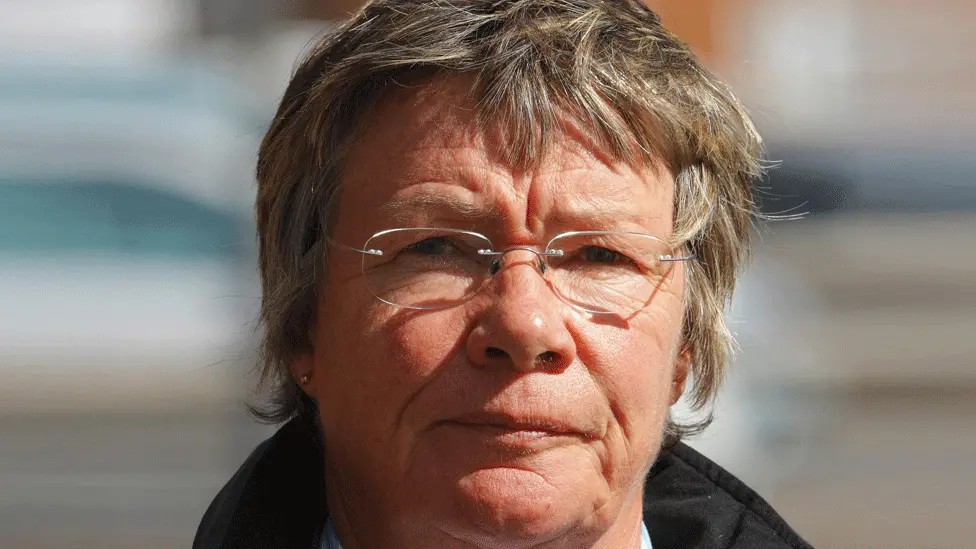 PA
PAThe first record of concerns being raised is of a phone call in 1991 by staff nurse Anita Tubbritt, to the local branch convenor of the Royal College of Nursing.
Shortly afterwards, 10 nurses set out their worries about deaths being "hastened unnecessarily" and a drug regime being used "indiscriminately". Meetings and correspondence ensued, but their warnings, which could have made a decisive impact, went unheeded. Most of the deaths occurred in the following seven years.
In 1998, the death of Gladys Richards led to a complaint by her family. Ms Richards had been in hospital to recover from hip surgery and was given diamorphine. She died three days later. The police dismissed her family as "troublemakers" in their first investigation according to the inquiry, but a second followed soon afterwards, shortly before Dr Barton's resignation.
It was not until 2010 that a General Medical Council investigation found Dr Barton guilty of serious professional misconduct.
After looking at more than 2,000 deaths between 1987 and 2001 the inquiry estimated that a total of at least 650 patients are likely to have been given drugs which shortened their lives without medical justification.
The report concluded: "The families, and indeed the nation as a whole, are entitled to ask how these events could have happened."
